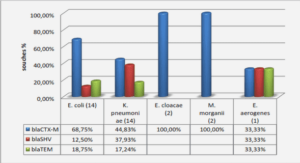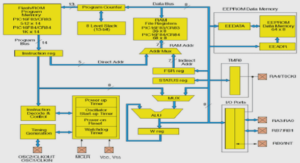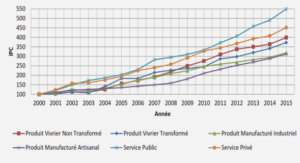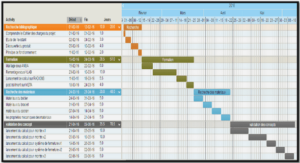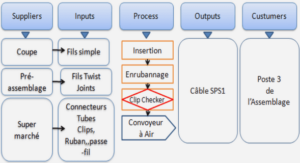Introduction
Spinal pain, particularly low back pain, is considered one of the most important and corn mon chronic disease (Manchikanti et al., 2009). Low back pain is a leading cause of the disability in high in come occidentallike United States where low back pain is the third cause of disability-adjusted life-years after ischemic heart disease and lung cancer (Disease, Injury, & Prevalence, 2017; Hurwitz, Randhawa, Yu, Cote, & Haldeman, 2018; Mokdad et al., 2018). Non-specific low back pain, also called mechanical low back pain, accounts for the majority cases oflow back pain (Hooten & Cohen, 2015; Hoy et al., 2010; M. W. van Tulder et al., 1997). Several interventions are used to manage non-specific low back pain and recent guidelines recommend conservative treatments as first-line treatment (Qaseem et al., 2017; Shekelle et al., 2017).
Spinal manipulation is a conservative therapy that was shown to be effective in the management of low back pain (M. van Tulder et al., 2006; Wong et al., 2016). A meta-analysis and a systematic review on the effects of spinal manipulation on pain perception reported hypoalgesia on both c1inical and experimental pain (Coronado et al., 2012; Millan et al., 2012).
One hypothesis for the reported hypoalgesia is the modulation of spinal mechanisms underlying temporal summation, which is involved in central sensitization and in the development and maintenance of chronic pain (Bialosky et al., 2014). Accordingly,.a recent study showed that temporal summation of experimental back pain is attenuated by spinal manipulation (Randoll et al., 2017). Previous studies also showed that temporal summation ofpain in dermatomes related to the segments on which spinal manipulation is applied can be decreased (Bialosky et al., 2009; Bialosky et al., 2014; George et al., 2006). However, although temporal summation is a spinalmechanism, the neural substrate of the reported effects is not c1ear and objective measures of temporal summation are needed in addition to subjective pain reports as pain may be influenced by supraspinal mechanisms independent of the dorsal horn neurons. A common way to evaluate spinal processes underlying pain is the use of the nociceptive flexion reflex (NFR), a polysynaptic reflex occurring in the spinal cord (Sandrini et al., 2005). This reflex present both a strong correlation between his threshold and the threshold of pain (Willer, 1977) and temporal summation of this reflex can be obtained in musculoskeletal structures with a similar protocol to the one use to evoke temporal summation of pain (ArendtNielsen et al., 1994). This reflex is often use to assess pharmacological and nonpharmacological analgesic effects such as those of spinal manipulative manual therapy (Sandrini et al., 2005).
On a related topic, studies have been conducted to examine the relationship between mechanical parameters of spinal manipulation and segmental neuromuscular responses using a computer controlled apparatus (Colloca et al., 2006; Nougarou et al., 2013; Nougarou et al., 2014; Page et al., 2014; Reed et al., 2013). The advantage ofthese devices is the reproducibility of the mechanical stimulation compared with a manual spinal manipulation. The disadvantage is that it is less ecological compared with spinal manipulation applied by a manual therapist as no human contact occurs, which may influence the perception of the participant. Nevertheless, finding from studies using this device indicate that neuromuscular responses induced by spinal manipulation are proportional to the force application. However, how these mechanical parameters of spinal manipulation can affect the amplitude of pain modulation has been investigated in only few studies (Krouwel et al., 2010; Reed et al., 2014) and is still unclear.
The objective of the present study was to investigate the mechanisms underlying the hypoalgesic effects of spinal manipulation using a controlled mechanical force and the nociceptive flexion reflex (NFR) , as an index of spinal nociceptive transmission. We hypothesized that spinal manipulation applied as a controlled mechanical force would attenuate temporal summation of the nociceptive flexion reflex, reflecting a spinal mechanism of hypoalgesic effects of spinal manipulation.
Methods
Ethics approval
Ail experimental procedures were approved by the Research Ethics Board of « Université du Québec à Trois-Rivières » and conformed to the revised version of the Declaration of Helsinki. Ali participants were informed of the experimental procedures, signed the informed consent and acknowledged their right to withdraw from the experiment at any time of the study without prejudice. After completing the study, participants received compensation for their travel, time and commitment to the study. Participants underwent a session of 90 minutes, including NFR threshold determination and assessment NFR and pain modulation by the mechanically-assisted spinal manipulation (MASM).
Study participants
Participants were recruited by advertisement on the campus of « Université du Québec à TroisRivières ».
Thirty-two healthy volunteers were recruited in the study (21 women and Il men; range 18-33 y.o.; mean ± SD: 23.7 ± 3.5 y.o.) and were randomly distributed into two groups with a 1/1 ratio. Participants were included in the study if they were between 18 and 50 y.o. and were excluded if the y had taken any medication within 2 weeks prior to the experiment, if they had a history of acute or chronic pain, acute or chronic illness, osteoarthritis of the spine, had a diagnosed psychiatrie disorder or a history ofpathology/surgery of the spine.
Experimental design
This study relies on a mixed design to compare temporal summation of NFR and pain over time between two groups receiving a MASM of75 N (control) or 250 N. Thirty blocks of stimuli, comprising a single train and a repeated train, were delivered with an inter-stimulus interval of one minute, fifteen in each condition (non-painful and painful shocks; see Figure 1).
For each condition, the first five stimuli of each condition served as baseline prior to MASM.
The following ten stimuli were used to evaluate the effects of MASM on temporal summation of NFR and pain over time. The painful and non-painful conditions were counterbalanced comparably in both groups.
Painful and non-painful electrical stimulation
Transcutaneous electrical stimulation was administered using a DS7 A constant CUITent stimulator (Digitimer Ltd ., Welwyn Garden City, Hertfordshire, UK) controlled by a sequencer integrated into the data acquisition system (Spike 2, Cambridge Electronic Design, Cambridge, England). The degreased skin over the right sural nerve was stimulated just behind the lateral malleolus using a pair of custom-made surfaces electrodes (1 cm2; 2 cm inter-electrode distance), with the anode placed distally and the cathode, proximally, to evoke orthodromie stimulation. NFR threshold was determined individually using a staircase method comprising three series of stimuli of increasing and decreasing intensity with steps of ImA [25, 26]. To ensure a constant NFR throughout the experiment, stimulation intensity was adjusted to 120% of the NFR threshold for the painful condition. For the non-pain fui condition, intensity was adjusted to 60% of the NFR threshold, which evoked no NFR and no pain but a light to moderate tactile sensation.
Results
Neuromuscular responses
Paraspinal muscle activity was examined between groups for each phase of the MASM to confmn that it produced the expected response for the 250N group (see Figure 9). Muscle activity was significantly different between groups across the 5 phases (interaction: F 4,240 = 10.6, p<O.OO 1, Tj2 P = 0.15). Planned contrasts revealed that for the 75 N group, muscle activity did not change significantly in any phase compared with baseline (aIl p’s>0.6). In contrast, in the 250 N group, muscle activity was increased during the thrust phase compared with baseline (p<0.001) and remained elevated compared with baseline in the three post-thrust phases (aIl p’s<0.001).
This indicates that the expected neuromuscular response to MASM was evoked in the 250 N group while no response was produced in the 75 N control group.
|
Table des matières
Résumé
Mots clés
Abstract
Keywords
Table des matières
Liste des figures
Liste des tableaux
Liste des sigles et abréviations
Remerciements
Chapitre l Introduction
Démographie
Douleur
La lombalgie
Épidémiologie
Facteurs de risque
Causes et diagnostics
Traitements disponibles
La manipulation vertébrale
Effets neurophysiologiques de la manipulation vertébrale
Neuromécanique
Douleur
Wind-up, sommation temporelle et sensibili sation centrale
Objectifs et hypothèses
Chapitre II The mechanism of back pain relief by spinal manipulation relies on decreased temporal summation of pain
Contributions des auteurs
Abstract
Introduction
Methods
Ethics approval
Study participants
Experimental design
Painful and non-painful electrical stimulation
Spinal manipulation and light mechanical stimulation
Subjective ratings
Statistical analyses
Results
Experiment 1: single pulse
Experiment 2: single train, repeated trains and temporal summation
Discussion
Perceptual changes induced by spinal manipulation
Neurophysiological mechanisms of hypoalgesia induced by spinal manipulation
Limitations and future directions
Conclusion
Acknowledgments
Conflict of interest
List of abbreviations
Références
Chapitre III Temporal summation of the spinal nociceptive flexion reflex is not attenuated by mechanically-assisted spinal manipulation
Contributions des auteurs
Abstract
Introduction
Methods
Ethics approval
Study participants
Experimental design
Painful and non-painful electrical stimulation
Nociceptive flexion reflex responses acquisition and analysis
Mechanically assisted spinal manipulation (MASM)
Subjective ratings
Statistical analyses
Results
Neuromuscular responses
Single trains
Repeated trains
Nociceptive flexion reflex
Single trains
Repeated trains
Discussion
Nature of the manipulation
Spinal reflex and manipulation
Limitations and future directions
Conclusion
Acknowledgments
Compliance with Ethical Standards and funding
Ethical approval
Conflicts of interest
References
Chapitre IV Discussion du mémoire
Changements perceptuels induits par la manipulation vertébrale
Hypothèses sur les mécanismes neurophysiologiques de l’hypoalgésie induite par la
manipulation vertébrale
Effets segmentaires
Théorie du portillon
Mécanismes de contrôle spécifiques
Effets supra-spinaux descendants
Processus non spécifiques cérébraux
Réflexes spinaux et manipulation vertébrale
Limites et directions futures
Chapitre V Conclusion et retombées attendues
Références du mémoire
![]() Télécharger le rapport complet
Télécharger le rapport complet

